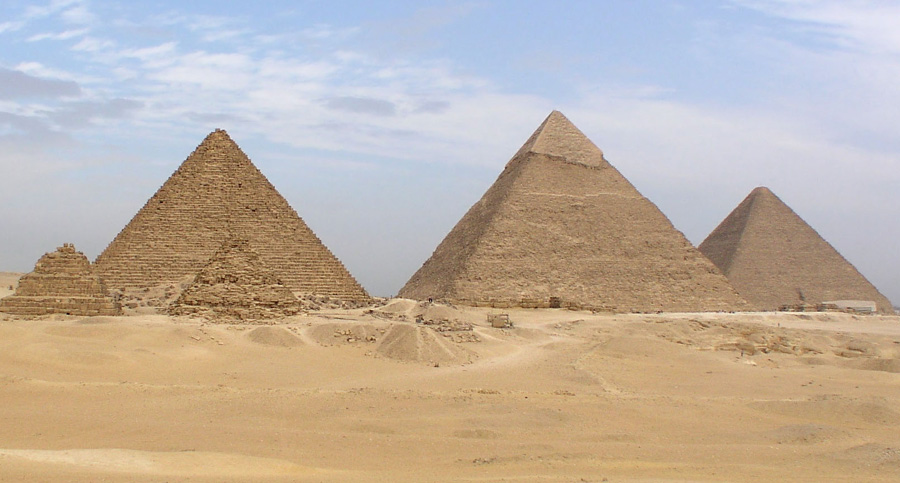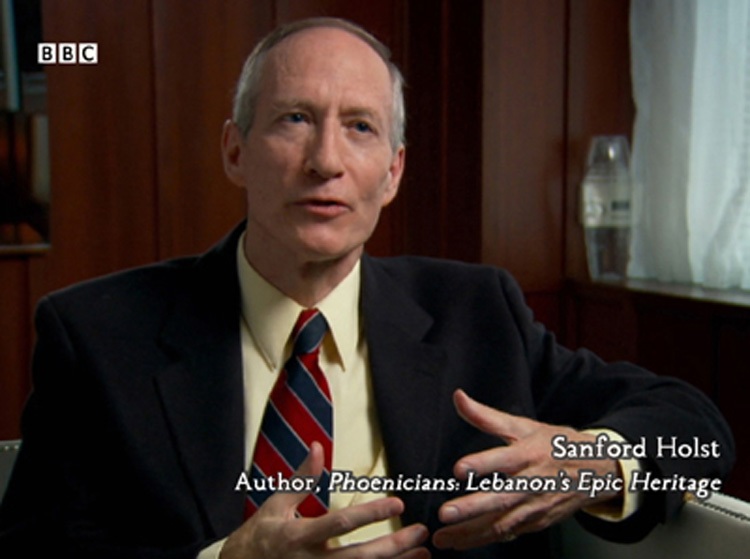
Egypt’s Great Pyramids revealed surprising evidence of the close relationship between Egyptians and Phoenicians in the form of two cedar boats. Buried beside the Great Pyramid of Khufu, who was also known as Cheops, these cedar-of-Lebanon boats were provided for the king’s use in the afterlife.
Oddly enough, the two boats were stored as large piles of boards, each plank carefully marked with images showing how they were to be assembled. When archaeologists put the boards together according to those rustic instructions . . . voila! . . . they had a boat.
This desire by Egyptians to have and use Phoenician cedar was driven by a simple fact: Egypt had almost no wood suitable for construction. The palm trees which lined the Nile had soft, pithy interiors which were of no use in constructing boats or raising large buildings. The best they could do was to harvest small acacia trees, which produced boards only three feet (one meter) in length. The ancient Greek historian Herodotus described how the Egyptians were forced to deal with this difficult situation.
Their cargo boats are made out of the wood of the acacia, which is very similar in appearance to Cyrenean lotus and weeps gum. The way they make these boats is to cut planks of this acacia wood, each about two cubits (a cubit being roughly a half-meter) long, and put them together like bricks. They use long, thick pins to fix these two-cubit planks together….
Herodotus 2:96
The favored alternative by the Egyptians was to acquire long boards and logs of cedar from the Phoenicians for use in large projects like the Pyramid boats. How large could these pieces of cedar be? When the Egyptian temple at Hierakonpolis was unearthed by archaeologist Michael Hoffman, it was reliably dated to 3200 BC . . . and was shown to have used four massive cedar-of-Lebanon pillars which were about three feet (one meter) in diameter and forty feet (thirteen meters) in length. From that time forward, cedar was used to line the burial chambers of kings and queens, and its oil was used in embalming their bodies. Cedar was also used — when it could be obtained in large enough quantities — for massive buildings and the making of watercraft, such as these cedar boats built for Khufu’s 2566 BC burial in his Great Pyramid.

To give you some idea of how well-established this relationship was between Egyptians and Phoenicians, in 1075 BC a priest from Egypt came to Byblos to obtain another cedar boat for his temple. This man, Wenamun, named others who had come from Egypt before him with the same request. Eventually he paid a sufficient price to get his ceremonial boat. Just like the boat for Khufu which had been built 1500 years earlier, the Phoenicians cut and shaped the cedar wood for this boat, then shipped it in pieces to Egypt, to be assembled at Wenamun’s temple.
These are only a few of the stories in this long and eventful relationship between Egypt and Phoenicia. Even years later — in 360 BC — when King Tachos of Egypt launched an ill-fated revolt against Persian domination, he was given shelter by the Phoenician King of Sidon. We discover a whole new dimension to Egyptian history from the vantage point of their long relationship with the Phoenician people.
The content of this website is drawn from the research of historian Sanford Holst

Updated September 30, 2023
CLOUD: Great Pyramids boat, pyramid boat, Khufu, Cheops

Further information
If you would like to experience more of the Phoenician world than you find in these short articles, see the book Phoenicians: Lebanon’s Epic Heritage. This extensive exploration is brightened with 104 illustrations.
Going beyond the few traditionally-cited facts, this authoritative work draws from discussions with leading archaeologists and historians to discover new clues and lines of inquiry into this secretive society.
Phoenicians
You can take a look inside this book. See the first pages here.
